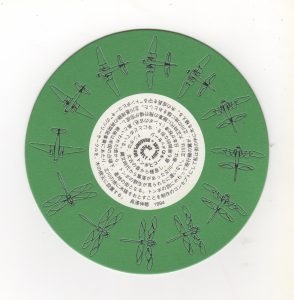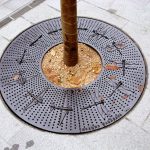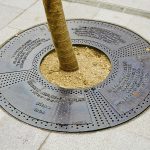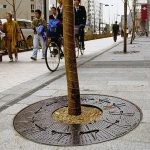

F A R E T T A C H I K A W A U R B A N R E N E W A L, T a c h i k a w a , J a p a n , 1 9 9 3 – 1 9 9 4
Commissioner: Faret Tachikawa Art Project Committee Organization: Housing and Urban Development Corporation, Tokyo Art Planner: Fram Kitagawa, Art Front Gallery
Award: Urban Planning Design Prize for Faret, Tachikawa Art Project, 1994
cast iron
The dragonfly is among the most primitive of all insects surviving from the Jurassic period. In early times Japan was known as the country of Akitsu, or “land of the dragonfly.” Swarms of dragonflies were seen in the Tachikawa area, which has been inhabited since the Johmon era (circa 10,000 B.C.), with a native ecology of swamp and marshland.
The first airstrip was built in Tachikawa in the Taisho era (1912-1925). With the U.S. occupation of Japan after World War II, the city served as an American military base and airfield. In a short time, war and industrial development transformed the flutter of dragonfly wings into the roar of airplane engines, as American aircraft cast their shadows on the city of Tachikawa.
With the installation of the seven tree grates and the planting of seven trees, Nagasawa evoked the city’s history, revitalized the urban ecology, and honored the massive tree planting campaign of 7,000 oaks by Joseph Beuys that took place in Germany in the 1980s. Faret Tachikawa Art Project received Urban Planning Design Prize in 1994 by the City Planning Institute of Tokyo in Japan.




